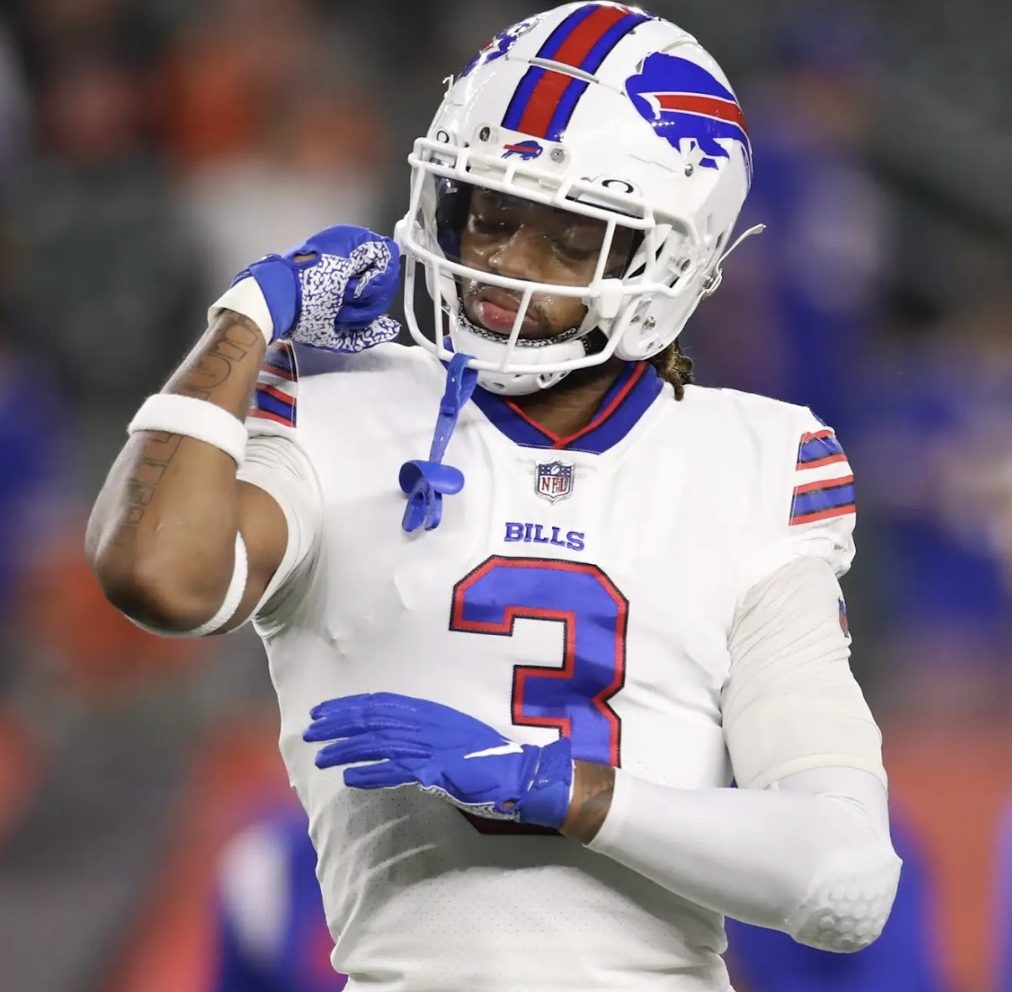
It was a chilling scene at the Cincinnati Bengals football stadium on January 2 for both fans and players alike; after taking a hit square in the chest from Bengals wide receiver Tee Higgins, Buffalo Bills’ safety Damar Hamlin collapsed on the field and was taken away in an ambulance after 19 minutes of CPR and administration of an AED on the field.
The response was overwhelming. Buffalo team members crowded around Hamlin to shelter him from the eyes of fans and cameras. NFL teams and members showed an outpouring of love and prayers on social media while waiting for more news on the player. Many continued to express concern over Hamlin’s condition and what he needed. While Hamlin is no longer in critical condition and is charted to continue playing, the NFL’s reaction to the situation marks growth in injury policies as well as places for growth in the sports industry as a whole.
Despite some debate about the situation, the NFL made the executive decision to cancel the game a few minutes after Hamlin was taken away in an ambulance. The quick response and major cancellation is a welcome contrast to injury response, especially after situations like that of Buffalo Bill Kevin Everett in 2007 where the game resumed after a hit that left him partially paralyzed and almost dead.
Some were even reminded of the 1971 Detroit Lions game where the game continued after 28-year-old Chuck Hughes collapsed from cardiac arrest on the field and was declared dead an hour later at a nearby hospital. While the outpouring of love was a welcome support in Hamlin’s situation, the biggest relief was the NFL’s response, especially in an ongoing conversation about the safety and health of players long-term.
However, one of the more critical conversations that arose from this incident is the use of an AED (automatic external defibrillator) in Hamlin’s situation and the crucial role it played in saving his life. While many measures are in place to protect the hearts of players and prevent those with fatal heart conditions from being put at risk, Hamlin’s cardiac arrest is a perfect example of how players’ hearts are still at risk, even when perfectly healthy. Medical experts believe that Hamlin suffered from “commotio cordis,” which occurs when the chest faces blunt trauma between heartbeats, leading to ventricular fibrillation or, as seen in Hamlin’s case, cardiac arrest (Washington Post).
Beyond the broader debate of sports being safe at all is the new concern from all sides about AEDs being available at all games, both professional and amateur alike. Hamlin’s life was saved by the immediate use of the AED on the field within seconds of his collapse. According to a 2008 study, the survival rate for “commotio cordis” sat at 15% at the time of the study. The use of an AED increased survival chances to 25% if administered within the first three minutes, but that survival rate dropped to 3% if resuscitation is delayed beyond three minutes, according to the National Library of Medicine.
Hamlin’s situation, while terrifying, is not the norm for professional football or sports in general. Usually, cases of “commotio cordis” in sports result from interactions during youth baseball and softball, with a few from ice hockey as well. During one study of “commotio cordis” in sports, 75% of cases involved the critical hit coming from a ball or a puck rather than a tackle or collision, according to the National Commotio Cordis Registry. Furthermore, a larger study showed that the average age of athletes that had fatal cases of “commotio cordis” was 14.7 years old.
Currently, AEDs are required at all athletic facilities and must be accessible within one minute of cardiac arrest, and every athletic venue must have an emergency medical plan. However, the NFL has more access to trained medical professionals than school and youth sports. While this is no fault of any schools or organizations that create these guidelines, perhaps Hamlin’s situation can renew the conversation where every second is crucial to the survival of young athletes with under-developed chest wall muscles in the ongoing debate of how we can protect our athletes.
For now, though, we are incredibly grateful for Hamlin’s recovery after the immediate life-saving response from the medical team on call that night and hopeful that we can continue such measures in sports across the nation.
Sources: Democrat & Chronicle, National Commotio Cordis Registry, National Library of Medicine, TIME, The Washington Post
